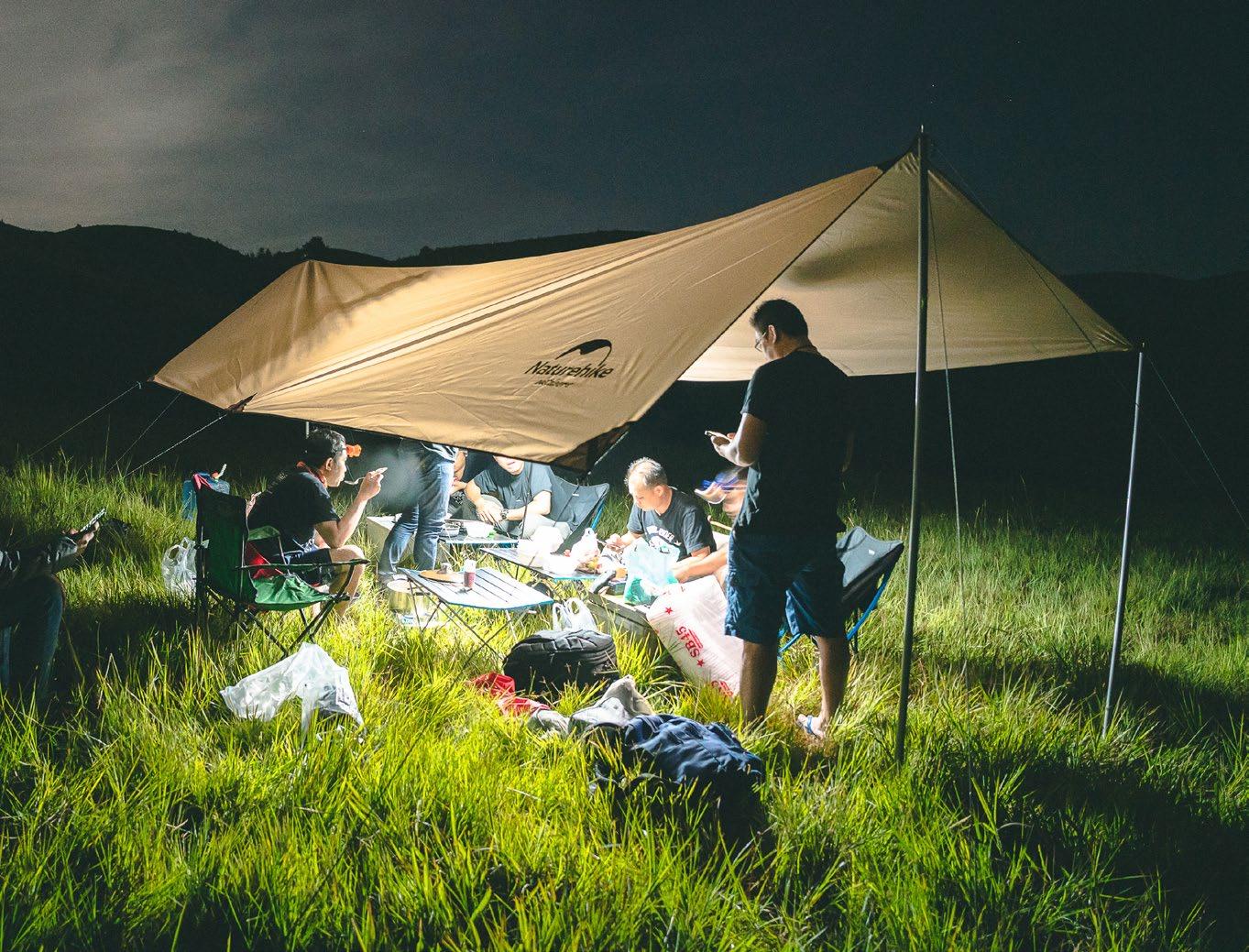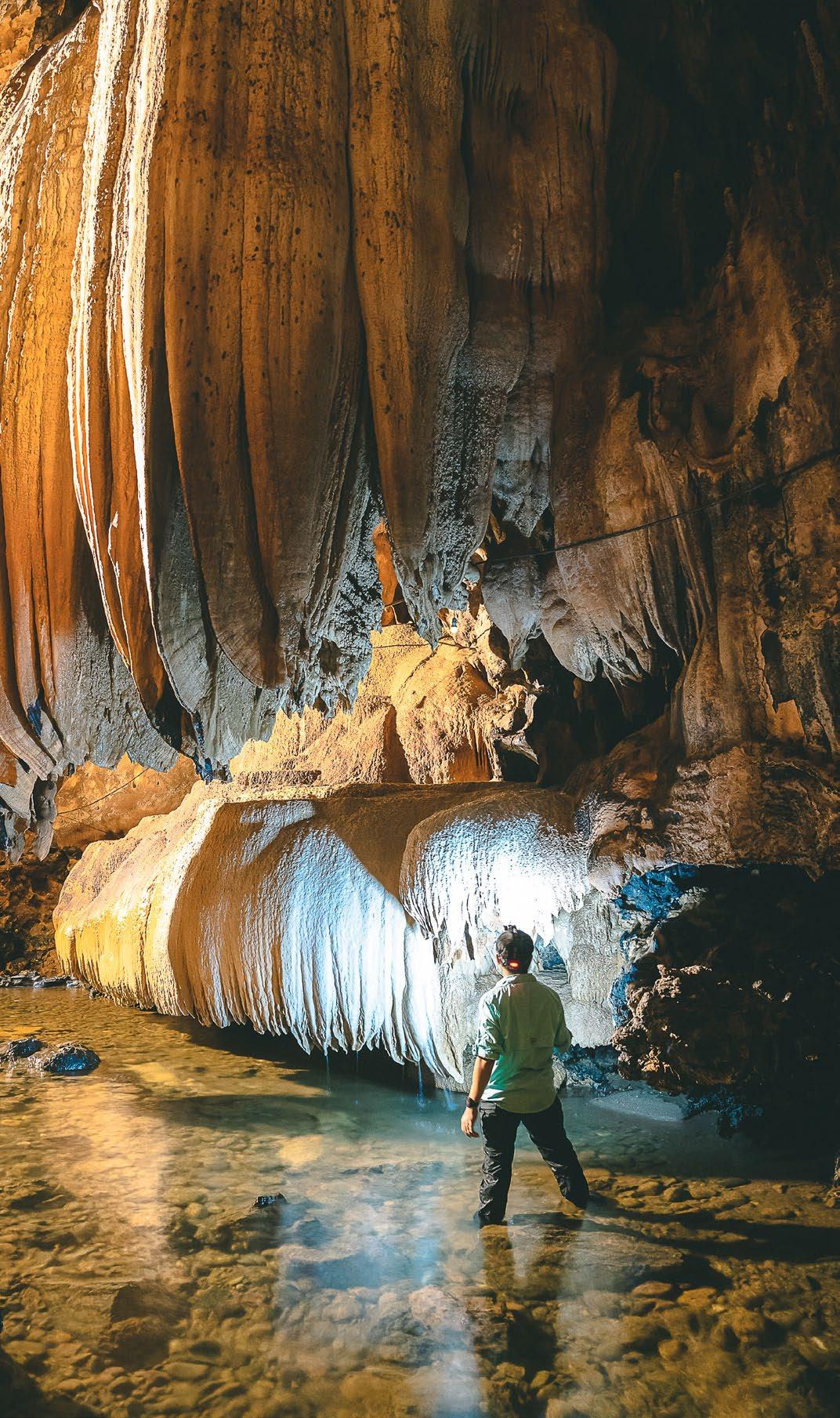
4 minute read
Notes from the Backroads
Words by Francis Savanhkham
Images by Phoonsab Thevongsa
The trouble with most travel in Laos is that it’s becoming predictable – the same tired circuit of temples and waterfalls, tourists clutching their guidebooks like religious texts. So when I set out from Vientiane on a motorbike, I had something else in mind: a 3000-kilometer loop through the country’s southern provinces, deliberately choosing the rainy season when the roads would be at their worst and the tourists at their fewest.

Day 1: 220km Vientiane to Xaysomboun
The capital’s concrete and dust gave way to mountain roads that seemed to mock the very concept of civil engineering. By sunset, I reached Meuang Anouvong, where the grassy mountains of Phou Houa Lon rose like sleeping giants. My fellow travelers – all Lao photographers with their expensive cameras wrapped in plastic against the dampness – insisted on camping. The moon, enormous and indifferent, watched us struggle with our tents.

Day 2: 130km Xaysomboun to Xieng Khoung
Chao Anouvong Cave proved to be like most revolutionary sites in Southeast Asia: more impressive in its historical significance than its physical presence. The cave, where they finally caught the king, was unremarkable, but the surrounding mountains had a savage beauty that photography couldn’t capture. At Vang Nam Khiaw, a stream cut through the landscape like a wound, bordered by cliffs that seemed to have been cleaved by a giant’s axe. The road to Meuang Khoun was the sort that makes you question your life choices.

Day 3: 350km Meuang Khoun to Nakai (Khammouane)
The journey to Nakai was a lesson in humility. The road past Meuang Mork wasn’t really a road at all, but rather a suggestion of one – a rocky riverbed that had forgotten its purpose. Phou Sam Xoun, at 2100 meters, offered the kind of view that makes you forget the punishment of getting there. The ghost ship on Nakai reservoir’s shore looked like a missed opportunity: grandiose, stranded, and slowly rotting.

Day 4: 460km Nakai to Phou Pha Souk Cave (Salavan)
Only madmen and journalists drive 460 kilometers on Lao back roads in a single day. We were both. The darkness caught us still moving, our headlights cutting through the night like dull knives.

Day 5: 90km Salavan to Phou Sekong (Kaluem District)
Morning revealed what darkness had hidden: Phou Pha Souk’s caves, where centuries of flowing water had created formations that looked like abstract art. The stilted library at Wat Kang was a surprise –a delicate wooden structure that seemed too fragile for its contents.

Day 6: 150km Sekong to Mystic Mountain Coffee
The Bolaven Plateau, with its volcanic soil and coffee plantations, represented everything that Laos wanted to be: productive, profitable, and picturesque. Mystic Mountain Coffee branded itself well, though I never discovered the mystery in these well-ordered rows of coffee plants.

Day 7-8: Mystic Mountain Coffee to Vientiane
The final push back to Vientiane felt like an afterthought, a necessary closing of the circle. We had covered ten provinces, seen parts of Laos that tourists never visit, and discovered what should have been obvious: that the country’s true character lies not in its carefully curated tourist sites, but in these forgotten corners where the old Laos still exists, stubbornly resisting the pull of the present.
Travel, I’ve always maintained, is only worthwhile when it shows you what you’re not looking for. By this measure, our rain-soaked circuit through southern Laos had been a success. We had found a country still raw, still real, still capable of surprising even those who thought they knew it well




